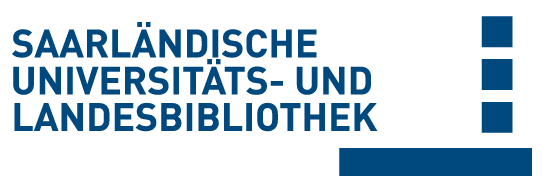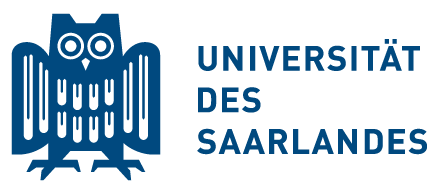Please use this identifier to cite or link to this item:
doi:10.22028/D291-46411 | Title: | Shape memory alloy modeling and simulation tool for elastocaloric systems |
| Author(s): | Welsch, Felix |
| Language: | English |
| Year of Publication: | 2025 |
| SWD key words: | Kalorische Formgedächtnislegierung Wärmepumpe Kühlung Modellierung Systemsimulation Thermomechanisch Phasentransformation |
| Free key words: | Elastocaloric Shape Memory Alloy Heat pump Cooling Modeling System simulation Thermo-mechanical coupling Phase transformation |
| DDC notations: | 500 Science 620 Engineering and machine engineering 624 Civil engineering and environmental protection engineering |
| Publikation type: | Dissertation |
| Abstract: | Solid-state cooling is an environmentally friendly, no global warming potential alternative to vapor compression-based systems. Elastocaloric (EC) cooling based on Nickel– Titanium (NiTi) shape memory alloys (SMAs) exhibits excellent heating and cooling capabilities. Because of the high specific latent heat activated by mechanical loading and unloading, large temperature changes can be generated in the material. The small required mechanical work input enables a high coe cient of performance (COP). Recently, a fully functional and illustrative continuous operating EC air heating and cooling system based on SMA was developed and realized. The heat pump (HP) device operates with a novel rotary drive concept using numerous tensile-loaded wire bundles. To assist the design process of an optimized device with given performance and efficiency requirements, a fully coupled thermo-mechanical system-level simulation tool is required. The simulation tool of the multi-element EC HP system is based on a physics motivated SMA model and implemented in MATLAB. This compact simulation tool is qualified for massively parallel computation on modern multi-core computers, which allows fast and comprehensive parameter scans. The current work gives, at first, an overview of ferroic-based HP concepts, the basic principles of SMAs, through EC specifics such as thermodynamic cycle, material char- acterization, and optimization, as well as SMA modeling. These basics are followed by the presentation of the currently realized EC systems and existing physics-based SMA models, resulting in the introduction of the Müller-Achenbach-Seelecke (MAS) model as the thermo-mechanical foundation for the aimed simulation tool. To understand the phase transformation (PT) behavior, a physics-based localized model is developed based on the MAS, validated, and simulations are performed, imitating experiments of a thin-film. A material test bench is developed and realized for the application-related material model calibration. Besides the conventional mechanical material parameters, this test bench enables the investigation of the local strain and temperature distribution along the specimen. As a result, it allows for the complete characterization of the needed thermo-mechanical material parameters in a single test bench under load conditions similar to those of the real EC HP system. Based on the material parameter set, the EC system model is implemented and validated according to the kinematics and fluidics of the realized EC HP system. To support the systematic study of distinct parameters, the system model is embedded in a developed control and data visualization tool. This tool enables massive parallel computation of numerous parameter sets and manages the comprehensive representation of the simulation results. First parameter studies are executed with the realized EC HP simulation tool presenting the result interpretation and trend detection. To get an impression of the EC HP system behavior, di erent load profiles, system dimensions, rotation frequencies, flow rates, strains, and system losses are simulated, compared, and interpreted. Concluding the HP topic, parameter studies are executed presenting possible system improvements. On the one hand, internal heat recovery concepts are introduced and simulated, which significantly improves the system performance for higher input temperature spans. On the other hand, water is used as heat exchange (HE) and heat transport (HT) medium, which enhances the heat exchange coe cient and specific heat capacity, enabling significantly higher system performance with unchanged design space. To demonstrate the complete capability range of the EC system simulation tool, a parameter study is performed using the system as a low-temperature heat engine. The presented work is performed within the Priority Programme SPP 1599 “Caloric e ects in ferroic materials: New concepts for cooling” of the German Research Foundation. Diese Arbeit entwickelt einMultiphysik-Simulationspaket für mehrelementige, elastokalorische Wärmepumpen (ekWP), basierend auf dem thermo-mechanisch gekoppelte Verhalten von Formgedächnislegierungen (FGL). Zum Verständnis der Phasentransformation in FGL, wird ein physikbasiertes, ortsaufgelöstes Modell auf der Grundlage von Müller-Achenbach-Seelecke entwickelt und anhand von Dünnfilmexperimenten validiert. Der entwickelte Materialprüfstand erlaubt die Kalibrierung anwendungsbezogener Materialmodelle durch Messung der ortsaufgelösten Dehnungs- und Temperaturverteilung im Probekörper. Dadurch wird die vollständige Charakterisierung der thermo-mechanischen Materialparameter in einem einzigen Prüfstand unter ähnlichen Bedingungen wie in realen ekWP möglich. Das Systemmodell für ekWP wird entsprechend der Kinematik und Fluidik des realen Systems in MATLAB implementiert. Um den Einfluss unterschiedlicher Parameter systematisch zu untersuchen und auszuwerten, wird das Berechnungsmodell in eine Steuerungsund Datenvisualisierungsumgebung eingebettet. Mit dem entwickelten Simulationspaket wird das Systemverhalten der ekWP unter verschiedenen Lastprofile, Systemabmessungen, Rotationsfrequenzen, Durchflussraten, Dehnungen und Systemverluste für verschiedene FGL und Wärmeträger simuliert, verglichen und interpretiert. Abschließend wird die Vielseitigkeit des Simulationspakets durch die Verwendung des Systems als Niedertemperatur-Wärmekraftmaschine demonstriert. |
| Link to this record: | urn:nbn:de:bsz:291--ds-464111 hdl:20.500.11880/40722 http://dx.doi.org/10.22028/D291-46411 |
| Advisor: | Seelecke, Stefan Diebels, Stefan |
| Date of oral examination: | 10-Sep-2025 |
| Date of registration: | 22-Oct-2025 |
| Faculty: | NT - Naturwissenschaftlich- Technische Fakultät |
| Department: | NT - Systems Engineering |
| Professorship: | NT - Prof. Dr. Stefan Seelecke |
| Collections: | SciDok - Der Wissenschaftsserver der Universität des Saarlandes |
Files for this record:
| File | Description | Size | Format | |
|---|---|---|---|---|
| 2025-09-22_Welsch_kor Rückseite_oLL.pdf | 47,86 MB | Adobe PDF | View/Open |
Items in SciDok are protected by copyright, with all rights reserved, unless otherwise indicated.

